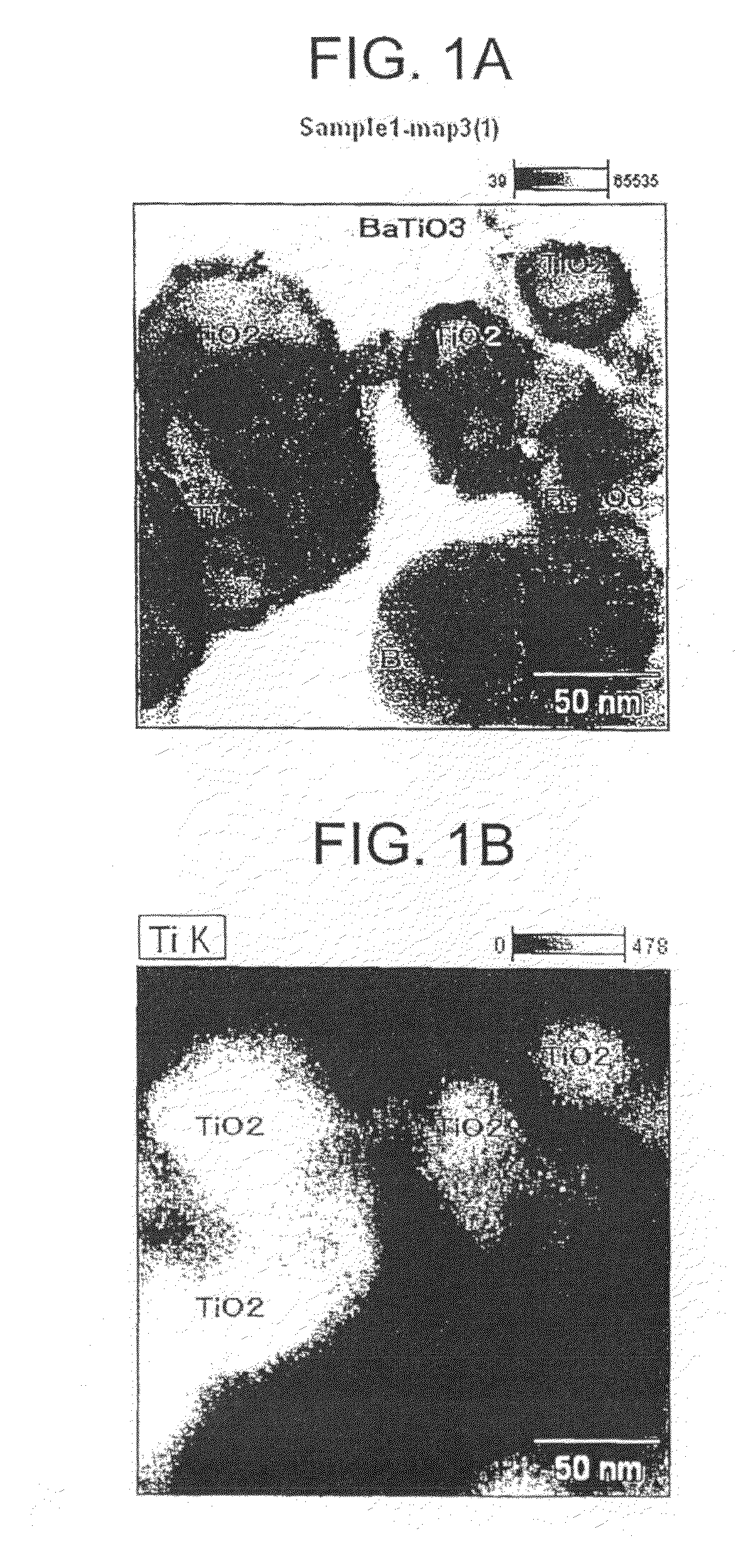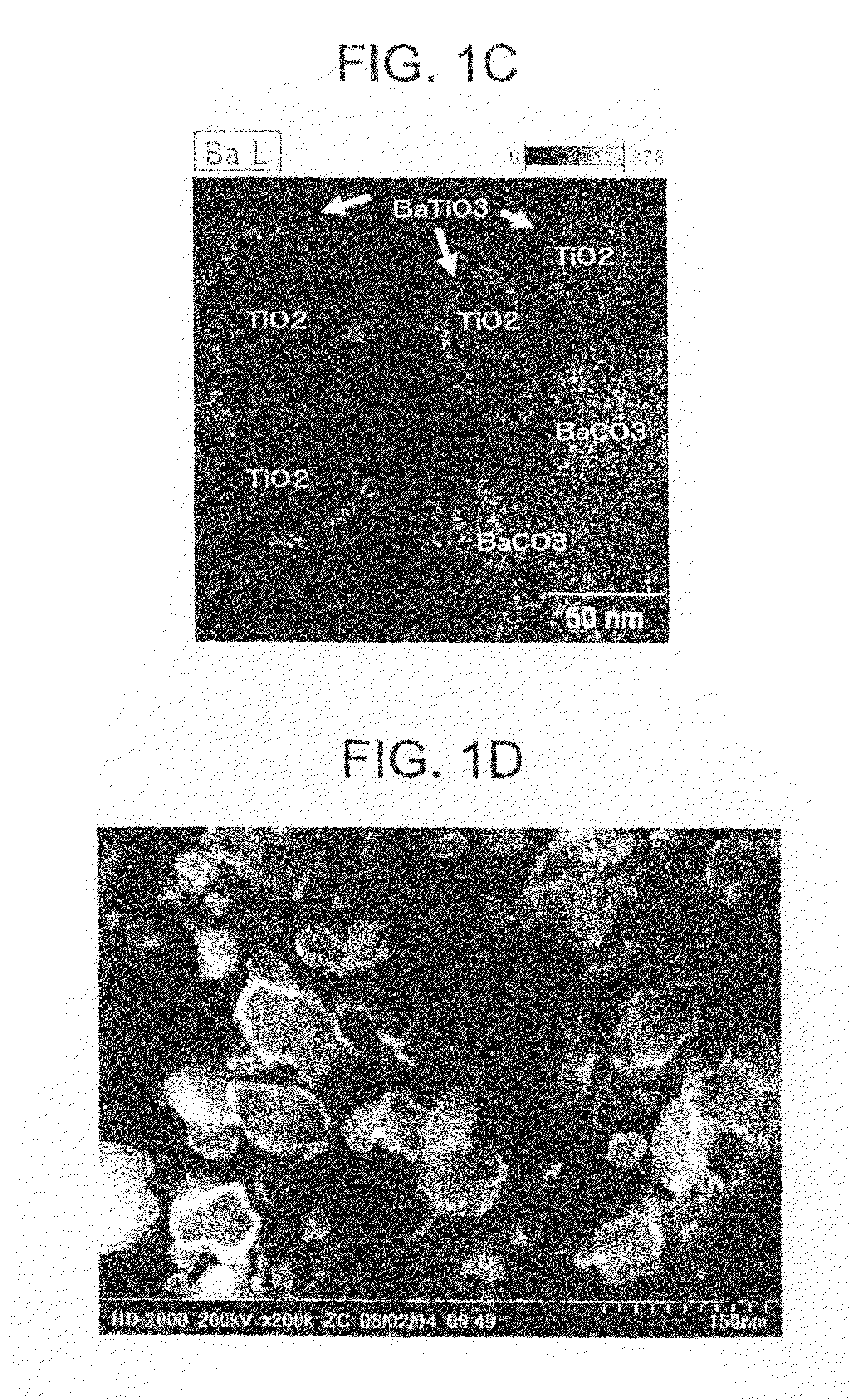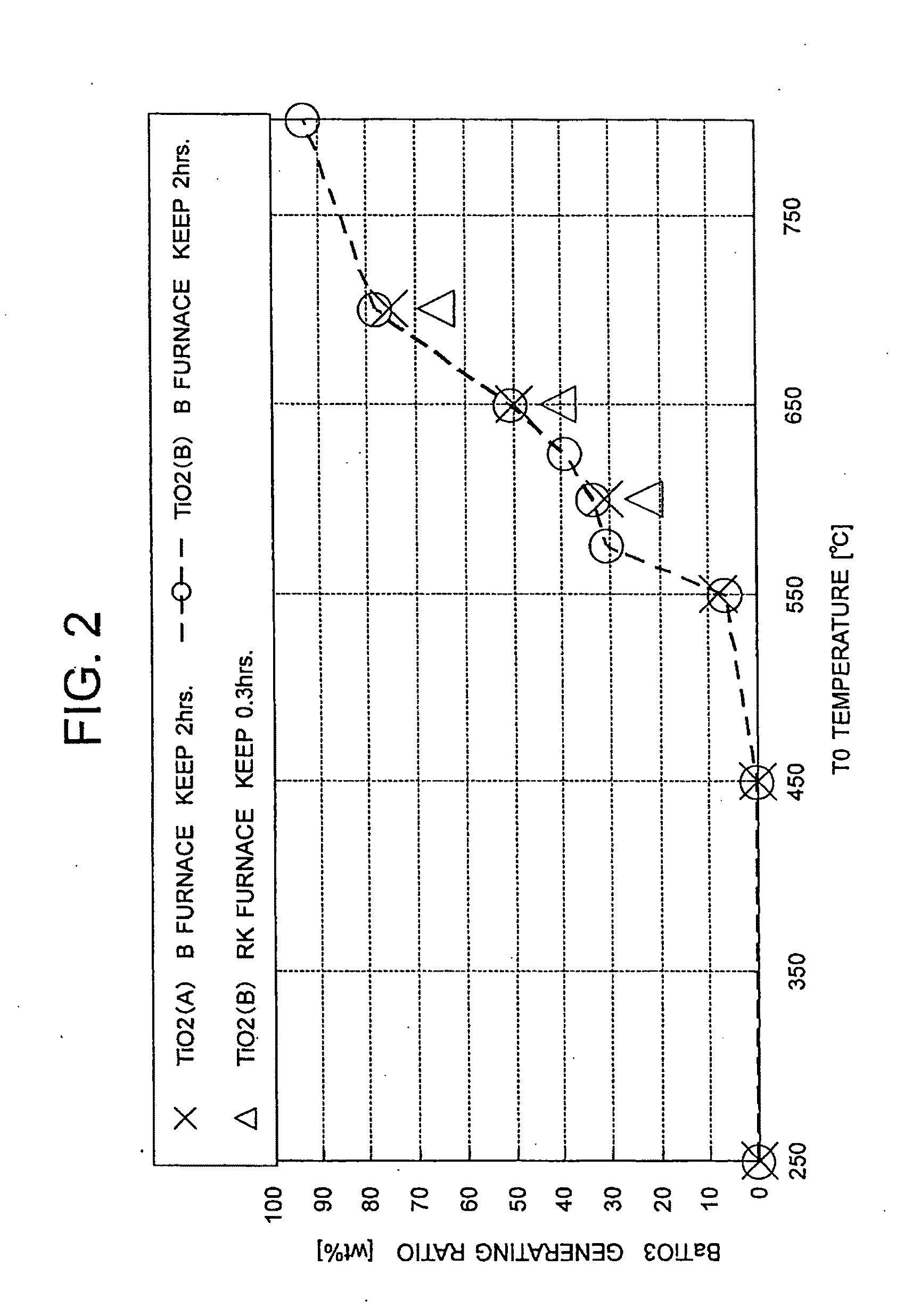Production method of dielectric particles
a production method and technology of dielectric particles, applied in material nanotechnology, nanotechnology, alkaline earth titanates, etc., can solve the problems of poor tetragonality of barium titanium, poor temperature characteristics of electric capacitance of obtained multi-layer ceramic capacitors, etc., to improve the crystallinity of barium titanate, improve the morphology of particles, and high crystallinity
- Summary
- Abstract
- Description
- Claims
- Application Information
AI Technical Summary
Benefits of technology
Problems solved by technology
Method used
Image
Examples
examples 1 to 3
Fabrication of Mixed Powder
[0116]Barium carbonate particles having a specific surface area of 30 m2 / g and titanium dioxide particles (TiO2(A)) were weighed so that a Ba / Ti ratio becomes 0.997, wet mixed for 72 hours by a ball mill having a capacity of 50 litters, wherein zirconia (ZrO2) having a 2 mm diameter was used as a medium, then, dried by spray drying so as to obtain mixed powder. The wet mixing was performed under a condition that slurry concentration was 40 wt % and a polycarboxylate-based dispersant was added in an amount of 0.5 wt %. Here, titanium dioxide particles are fine particles having a relatively large specific surface area, so that the materials have to be mixed sufficiently.
First Heat Treatment Step
[0117]A temperature of the mixed powder was raised from the room temperature to the first heat treatment temperature shown in Table 2 (T0=600° C.) under the atmospheric pressure in the air at a temperature raising rate of 3.3° C. / minute (200° C. / hour). After that, the...
examples 4 to 6
[0128]Mixed powder was fabricated in the same way as in Example 1B.
[0129]A heat treatment was performed on the mixed powder by using a rotary kiln furnace (referred to as “RK furnace”) in the air with the first heat treatment temperature of 600° C. for 0.3 hour. The treatment time of 0.3 hour was an average retention time for the powder to be in the temperature holding part of the rotary kiln furnace. Example 4B was conducted, wherein titanium dioxide as a material was TiO2(B) and the first heat treatment step was performed at 600° C. for 0.3 hour in the RK furnace. Except for changing the temperature of the first heat treatment step to 650° C., Example 5B was conducted in the same operation as that in Example 4B. Except for changing the temperature of the first heat treatment step to 700° C., Example 6B was conducted in the same operation as that in Example 4B.
[0130]Comparing to a batch furnace (referred to as “B furnace”) for performing a heat treatment by keeping the mixed powder...
PUM
| Property | Measurement | Unit |
|---|---|---|
| BET specific surface area | aaaaa | aaaaa |
| BET specific surface area | aaaaa | aaaaa |
| thickness | aaaaa | aaaaa |
Abstract
Description
Claims
Application Information
 Login to View More
Login to View More - R&D
- Intellectual Property
- Life Sciences
- Materials
- Tech Scout
- Unparalleled Data Quality
- Higher Quality Content
- 60% Fewer Hallucinations
Browse by: Latest US Patents, China's latest patents, Technical Efficacy Thesaurus, Application Domain, Technology Topic, Popular Technical Reports.
© 2025 PatSnap. All rights reserved.Legal|Privacy policy|Modern Slavery Act Transparency Statement|Sitemap|About US| Contact US: help@patsnap.com



